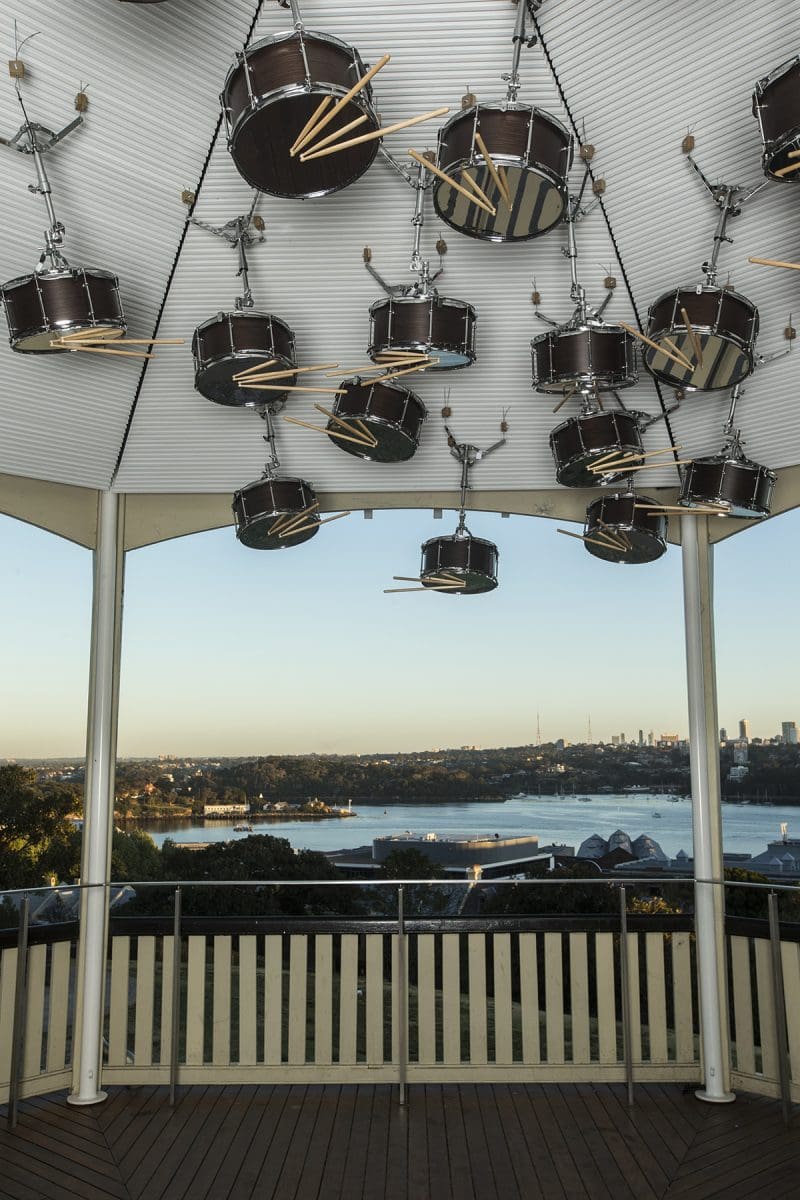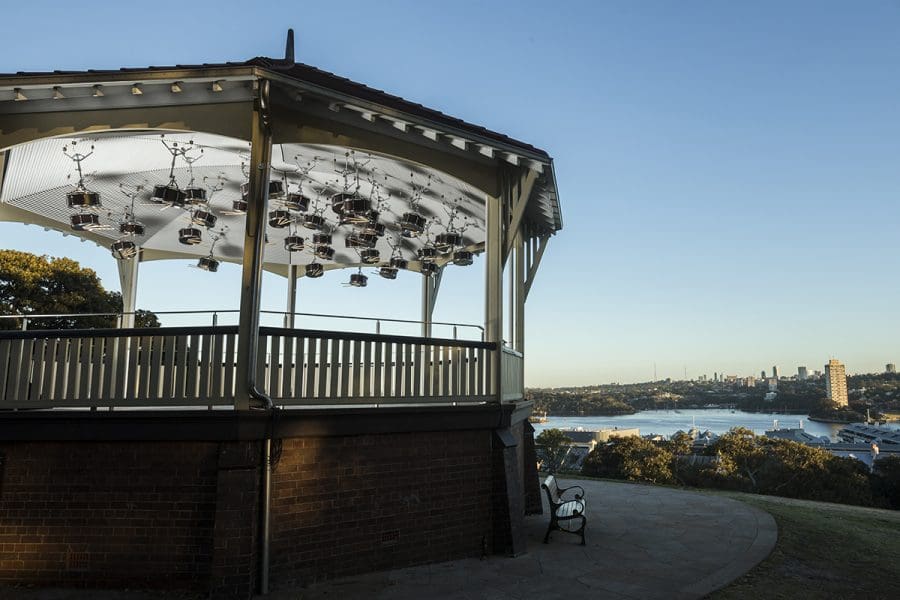
Place-driven Practice
Running for just two weeks across various locations in greater Walyalup, the Fremantle Biennale: Sanctuary, seeks to invite artists and audiences to engage with the built, natural and historic environment of the region.



Imagine an open-aired band rotunda filled with 38 upside-down snare drums, all hanging from the ceiling. With drumsticks hovering over the mirrored drum skins, the scene is a literal suspension of disbelief. It’s also the initial visual impact of French-Albanian artist Anri Sala’s latest work, The Last Resort. Situated on Sydney’s Observatory Hill, The Last Resort is the 33rd Kaldor Public Art Project and the first time Sala has completed a major new work in Australia.
Sala’s upside-down drums were inspired by a previous trip to Australia. “Anri got his idea of the upside-down drums from walks through the botanic gardens when he was here in 2012,” explains director of Kaldor Public Art Projects, John Kaldor. “He saw the flying foxes hanging upside-down and thought of it as a starting reference to being down under, the European idea of Australia as upside-down.”

While The Last Resort initially appears as a visual installation, the work also contains an important sonic element. For the installation Sala has transformed Mozart’s Clarinet Concerto in A major, K 622, reworking the piece by imagining the journey of the music from Europe to Australia. In particular, the composition follows the diary of settler James Bell, who travelled to Australia in 1838. “Bell kept a diary of the voyage to Australia and each day he started with the weather conditions,” says Kaldor. “Anri took that as inspiration and he changed the music according to these conditions, so when it’s very stormy he quickens the pace and when it’s calm the music is slowed down.”
With two speakers placed inside the drums, listeners will hear the tapping of drumsticks alongside high and mid-range sonic tones.
While Sala has shown his upside-down drums in various international settings, this particular work responds directly to Observatory Hill; the site was important for navigational needs during settlement. In addition The Last Resort also engages with larger colonial contexts. “The work refers to the contrast between how things were in Europe during the age of the Enlightenment in the 18th century, contrasting this with the founding of the colonies here in Sydney,” explains Kaldor.
The Last Resort
Anri Sala
Kaldor Art Projects 33
Observatory Hill Rotunda
13 October – 5 November